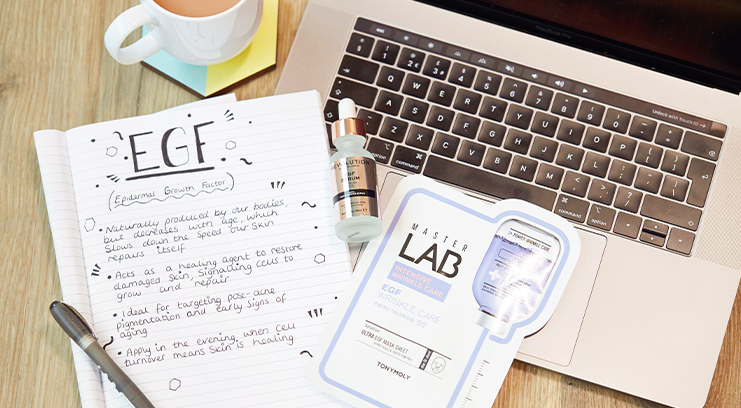If you’re clued up on skincare then retinol, acids, peptides, and antioxidants will all be words you’re familiar with – but what about EGF? The ‘new kid on the block’ was actually discovered in the 1950s, but has only recently been endorsed by dermatologists – its skin-rejuventating powers are pretty impressive… Here’s everything you need to know.
What is EGF?
EGF (which stands for epidermal growth factor) is used in medicine to speed up wound recovery, and also has multiple benefits to skin, including reducing the appearance of wrinkles, improving hydration, and preventing pigmentation.
How does it work?
EGF stimulates growth at cellular level – acting as a healing agent to restore damaged skin. It works by binding to cells and signalling them to behave like young, healthy cells – to grow, repair, and survive. This basically means cells heal themselves quicker and better.
Why should I use it?
If you’re noticing signs of skin aging, dehydration, or find your skin is easily pigmented – whether by sun damage or by post-acne marks. EGF stimulates collagen and elastin to improve skin texture and elasticity (smoothing the appearance of wrinkles). By growing new cells, it strengthens the skin’s barrier – meaning it can hold on to moisture better and maintain optimal levels of hydration. It also cleverly prevents melanin production during wound healing, so it prevents the red marks left behind by breakouts.
When should I use it?
Our bodies naturally produce EGF, but this amount decreases as we age, which slows down the speed at which the skin can repair itself. If you’re noticing early signs of aging in your skin, it’s probably a good time to start incorporating EGF into your routine. You might want to do so earlier if you find your skin experiences scarring or red marks after breakouts.
The best time to use EGF is in the evening when cell turnover means skin is at its healing peak. Apply it after cleansing and before moisturising.

